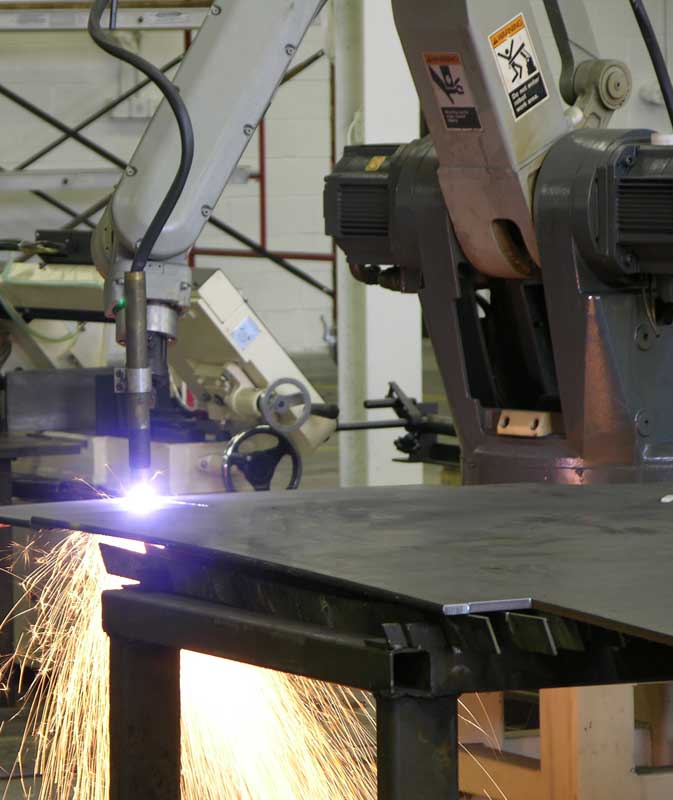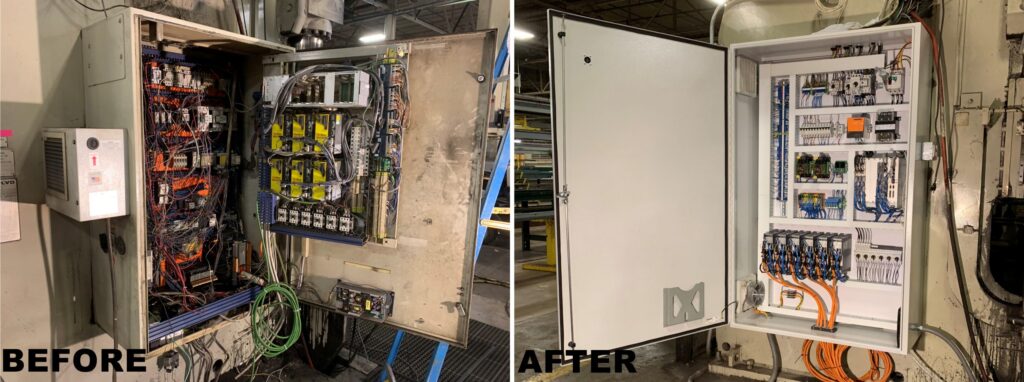Our Blog
Plasma Cutting
Plasma cutting can only be used for cutting conductive materials using an accelerated hot plasma jet. Common materials cut with a plasma torch include steel, stainless steel, aluminum, brass and copper, but can also cut other conductive metals. Plasma cutting is widely used in manufacturing, automotive repair and restoration, industrial construction, salvage and scrap work. Plasma cutting is used in a wide variety of applications from large CNC (Computer Numerical Control) applications to small hobby shops due to its combination of high speed, high precision cutting and low cost. The basic process of plasma cutting is to create an electrical channel of superheated and electrically ionized gas. H. Plasma is generated by the plasma cutter itself, forms a closed circuit through the workpiece to be cut, and back to the plasma cutter via a ground clamp. This is achieved by blowing compressed gas (oxygen, air, inert gas, etc. depending on the material to be cut) at high velocity through a concentrated nozzle onto the workpiece. An electric arc is then generated in the gas near the gas nozzle or between an electrode incorporated in the gas nozzle and the workpiece itself, which ionizes a portion of the gas, forming a conductive plasma. To generate enough heat to melt the workpiece , current flows from the mechanized torch to the conductive material At the same time, a high velocity plasma and many compressed gases blow out the hot molten metal and cut the workpiece. H. Cut it apart. Dependding of the power source amperage, Plasma cutting is effective for cutting up to 2-in materials. Hand torches can typically cut steel up to 38 mm (1.5 inches) thick, and more powerful computer-controlled torches can cut steel up to 150 mm (6 inches) thick. [1] Plasma cutters cut by creating a localized “cone” at very high temperatures, making them very useful for cutting sheet metal into curved or angled shapes.

Plasma Cutting

Retrofitting is the addition of new technology or functionality to an existing vintage machine. Retrofits can happen for a number of reasons, for example with large capital outlays like naval vessels, military equipment or manufacturing plants, companies or governments can retrofit to reduce the need to completely replace a system. Other retrofits may be due to changing codes or requirements, such as seismic retrofit which is designed to strengthen older buildings to make them resistant to earthquakes.
Manufacturing
Retrofitting is the measure taken to adapt new features to old outdated machines
Mainly, retrofitting are steps taken to allow new or updated parts to be fitted to old or outdated assemblies.
Adapter parts are required for manufacturing when the design of a large assembly is changed or revised. If, after the changes are implemented, a customer (with an old version of the product) wishes to purchase a replacement part, then retrofit parts and assembly techniques will need to be used so that the revised parts fit properly on the older assembly . .
Retrofit is an important process used for valves and actuators to ensure optimal operation of an industrial plant. An example is the adaptation of a 3-way valve into a 2-way valve, which results in closing one of the three openings to continue using the valve for certain industrial systems.[6]
Retrofitting can improve the overall functionality of a machine or system by using advanced and updated equipment and technology, such as integrating human-machine interfaces into older plants.
Benefit of manufacturing retrofits:
-Saving on capital expenditure while benefiting from new technologies
-Optimization of existing plant components
-Adaptation of the plant for new or changed products
-Increase in piece number and cycle time
-Guaranteed spare parts availability[8]
-Reduced maintenance costs and increased reliability
Retrofitting
Dismantle old equipment
Define I/O (input and output)
Install new motor, electrical box and controller
Run the cable
Power up the water jet
Install software
Check the machine for the last time
Back to production
Train HMI controllers with your team
Dismantle old equipment
We arrived at the site on installation week and we got to work! We decommission the machine and remove the old equipment. We remove the old controller, motor, wiring and electrical box. Wires and cables are carefully removed.
Define I/O (input and output)
We then move on to the next step to define all the I/Os (inputs and outputs) that we will reuse. Majority of the time, we can reuse everything. Install new motor, electrical box and controller
Next, we installed new motors, electrical boxes, and a ServoTouch CNC controller. The team routed all of the motor’s wiring from the machine to the appropriate VFD or contactor. in the electrical box.
Run the cable
After installing the new hardware, we proceed with the wiring and configuration. We route all machine motor cables to the appropriate VFDs and retrofit any existing I/Os that we reuse. In the process, we are also update the CNC Machine wiring diagram from the user manual. We always leave the complete electrical diagram to the customer when the job is done.
Power up the water jet
After completing the wiring and hardware setup, we power the CNC machine! Our team does a preliminary checklist to make sure that the basics are correct, such as the x, y, and z movements of the machine. During this period, we make sure that everything goes well.
Install software
Once we confirm that the everything is moving, we will start setting up the software. We configure the axial direction, over stroke limit, software and IO limit. Check the machine for the last time
Once the software setup is complete, we verify that all bolts are tightened and all caps have been replaced. Once confirmed, we’ll be ready to re-integrate the retrofitted system into production.
Integration into production
Our installation team takes the existing g-code files and loads everything into the machine. Next, we cut a few test pieces to make sure everything works properly. Once we have confirmed that the machine is cutting correctly, we move on to the final and final stage of our CNC machine upgrade process. Train with your team
On the final day of installation, we spend time trai
